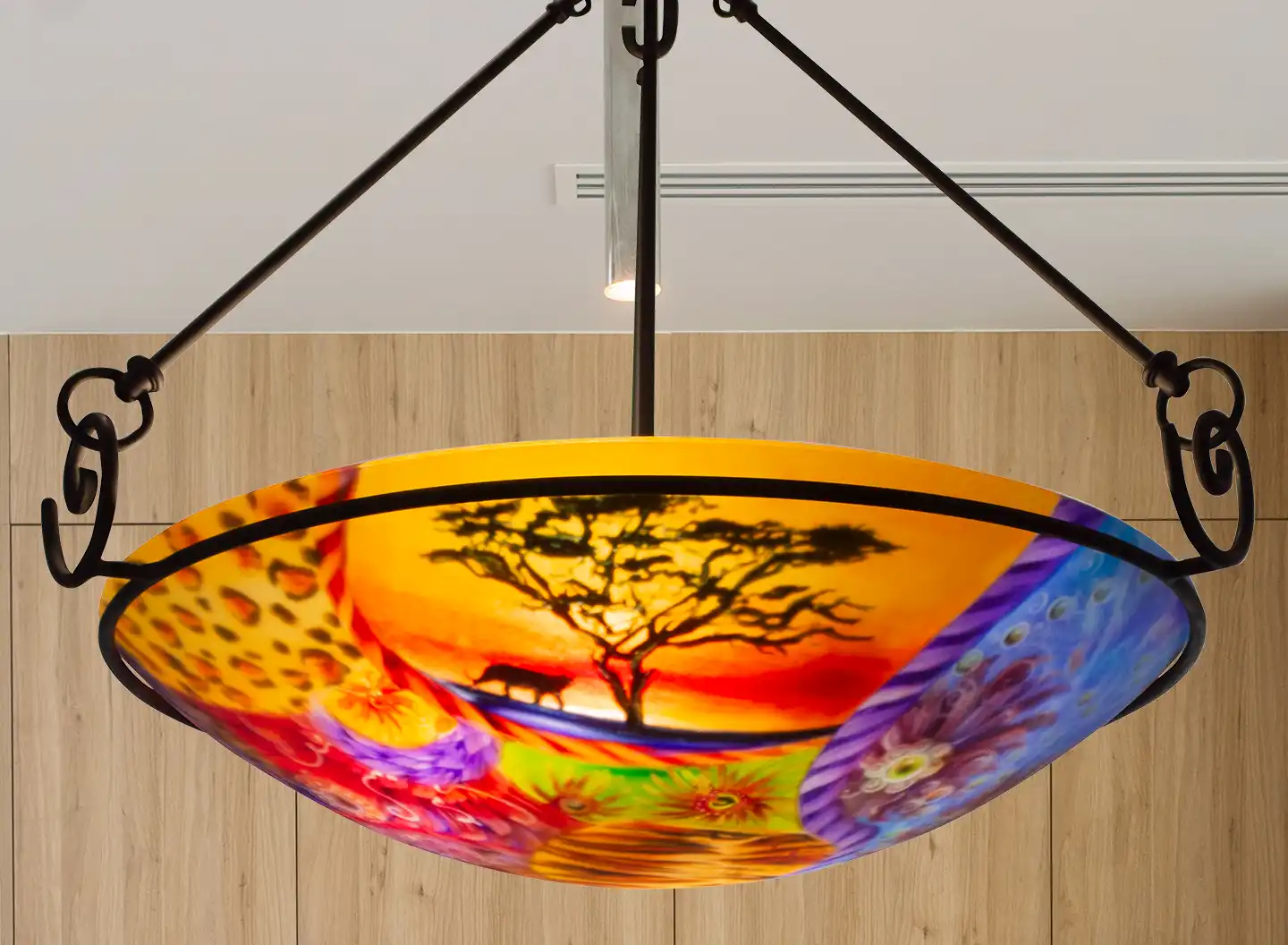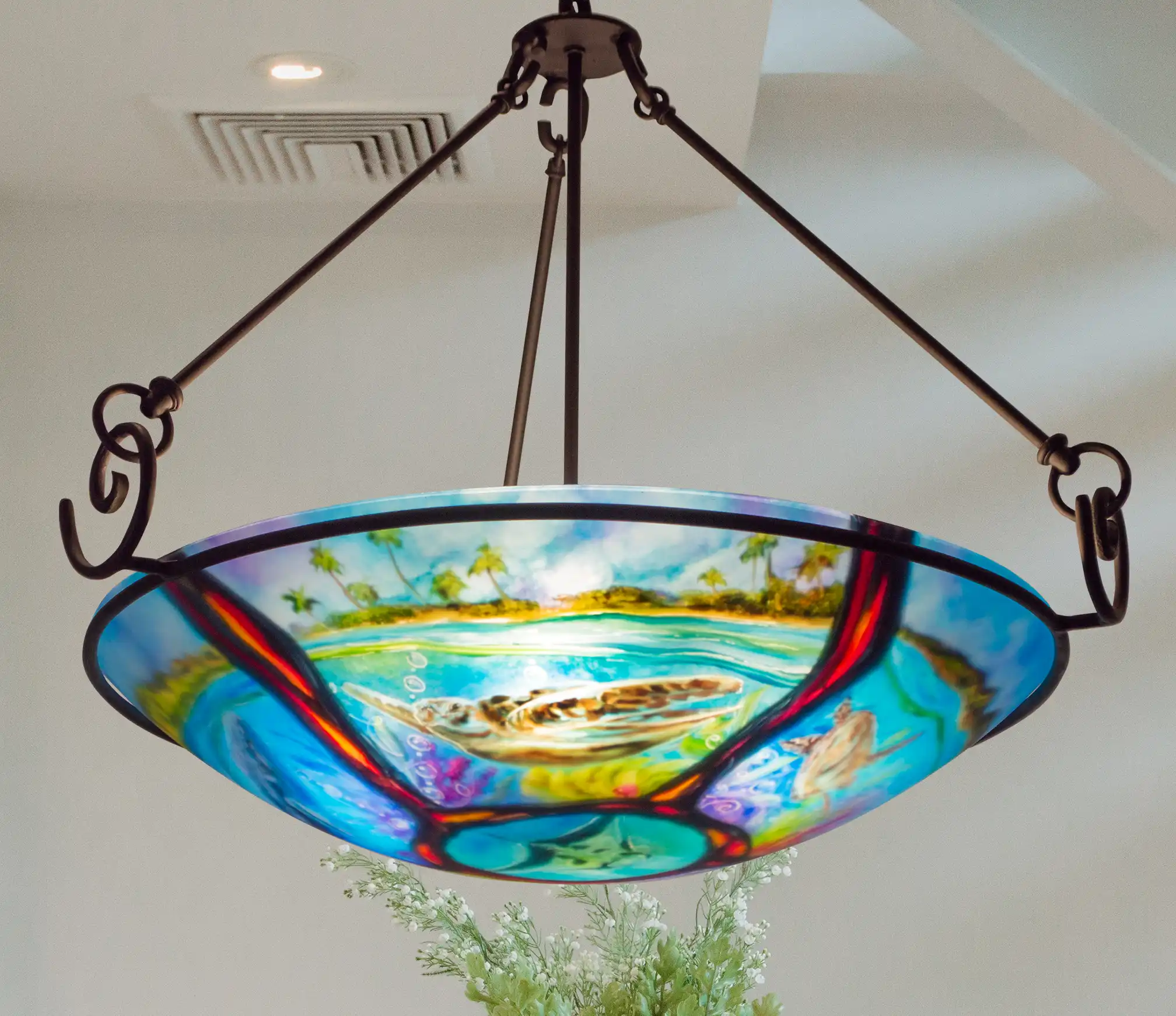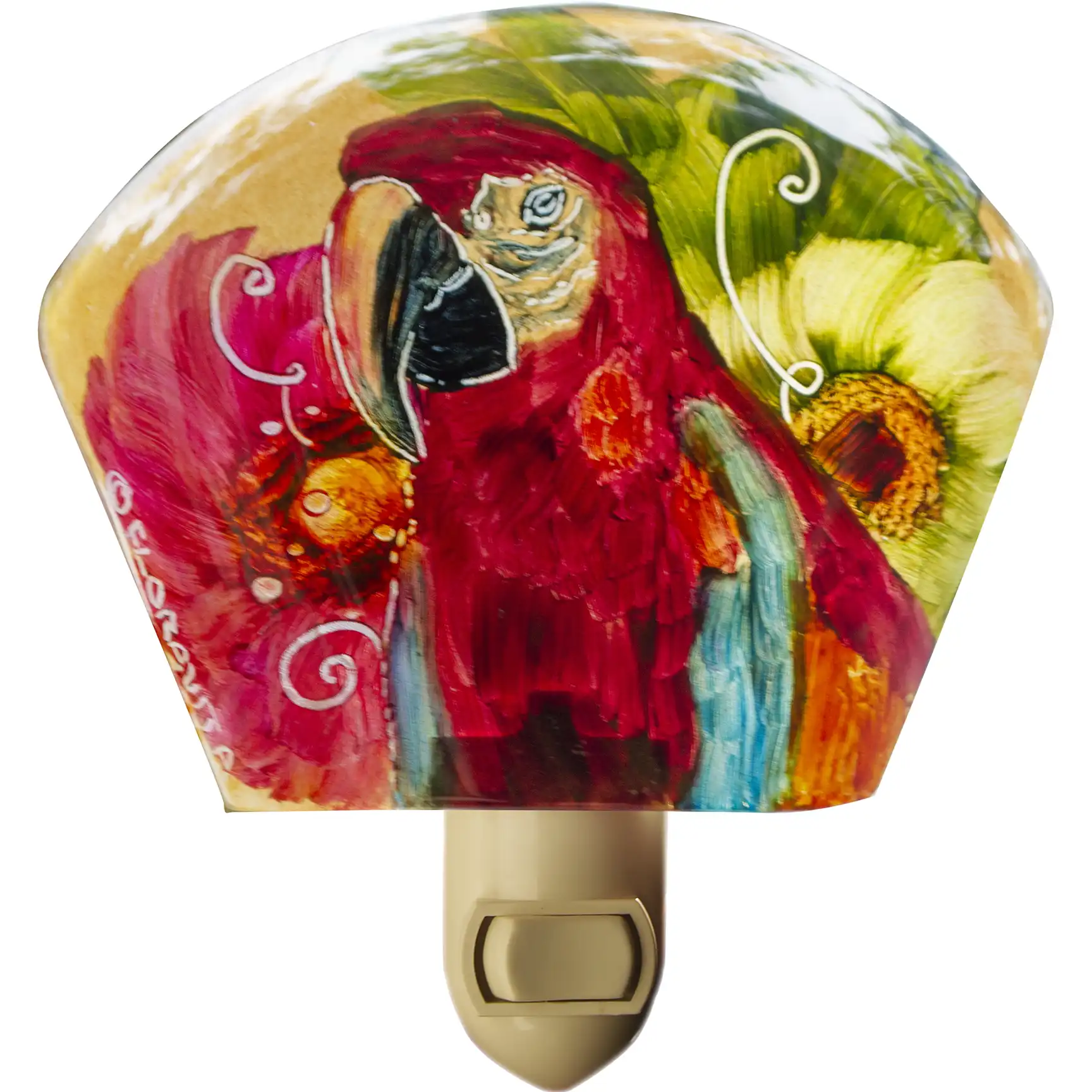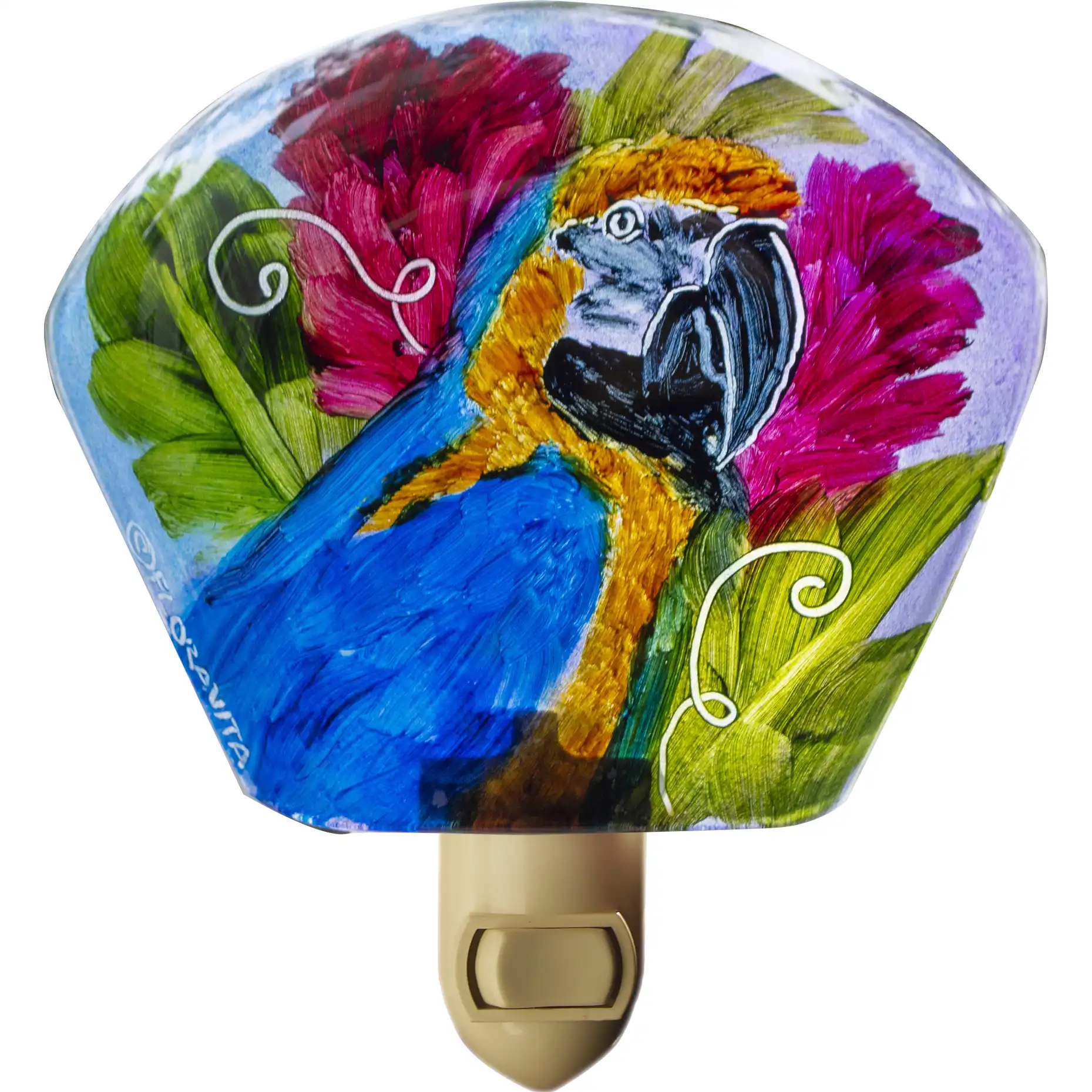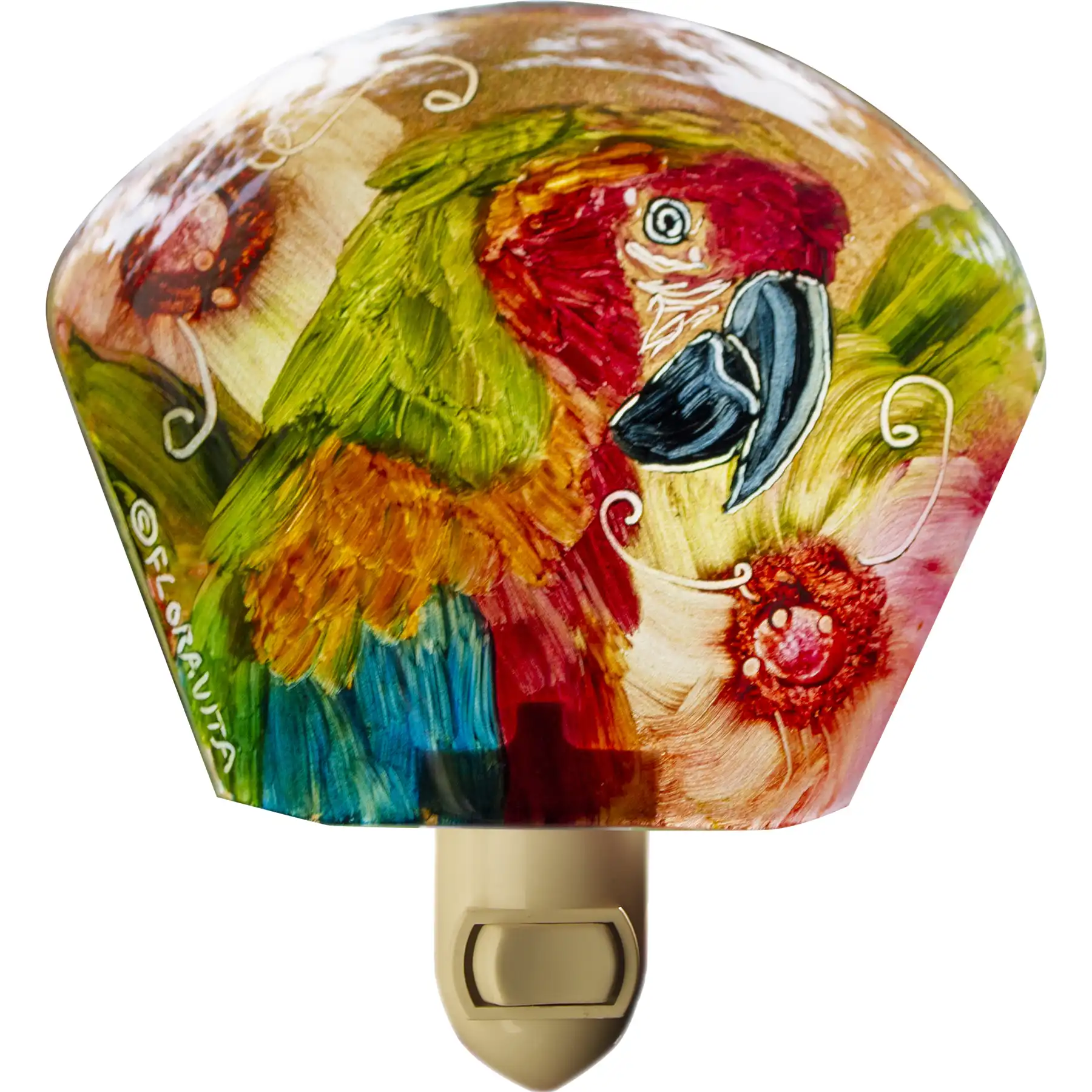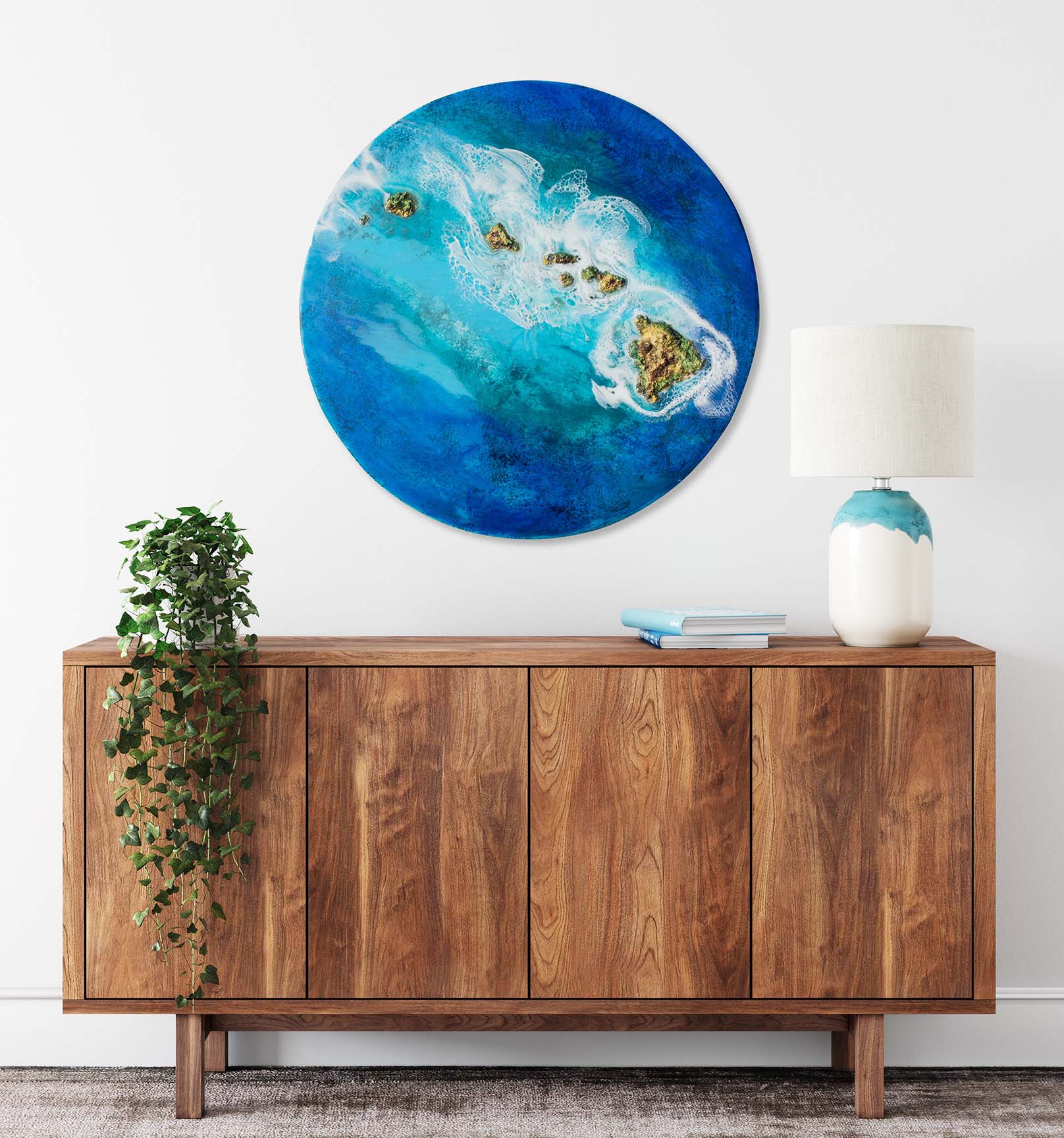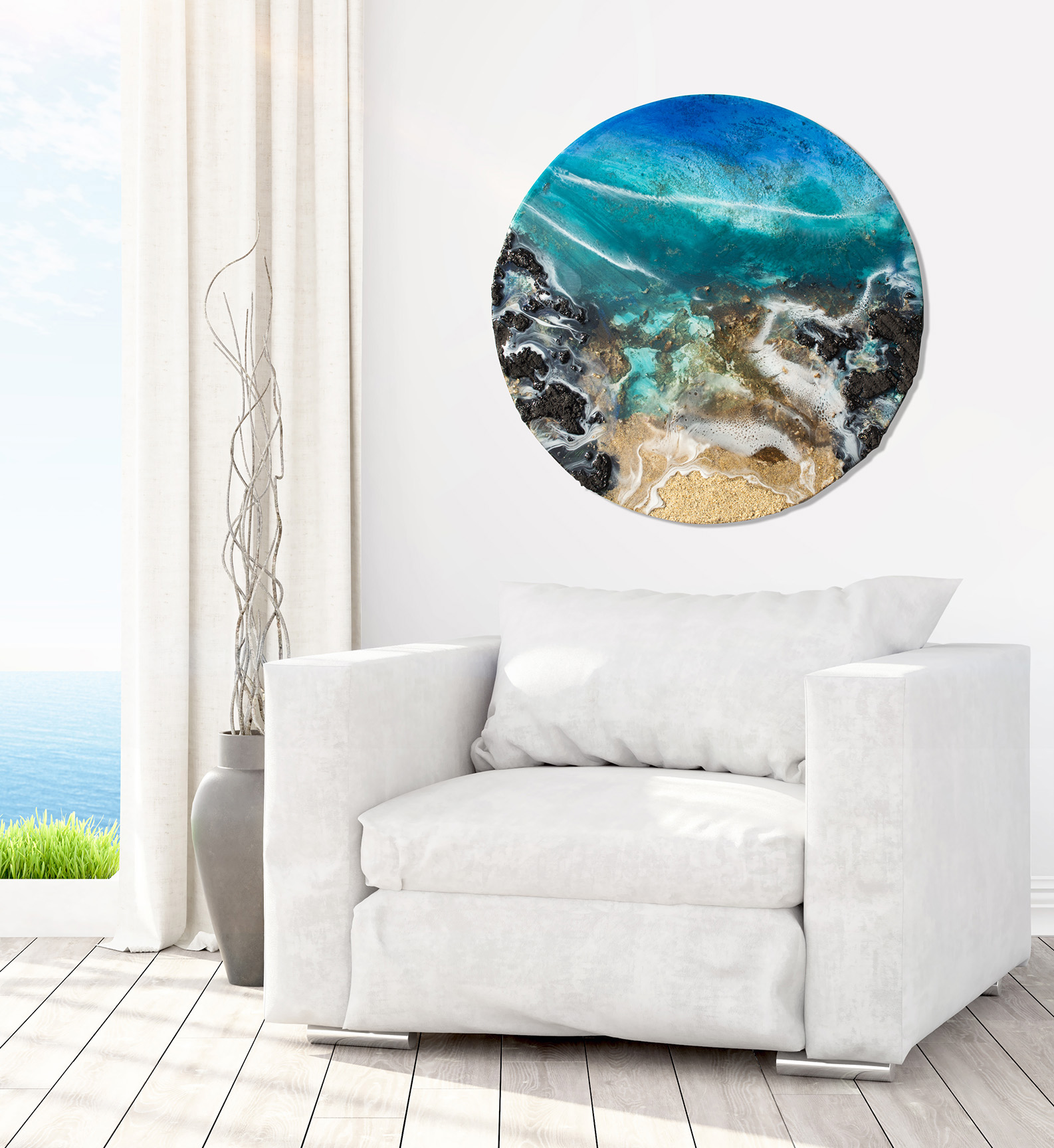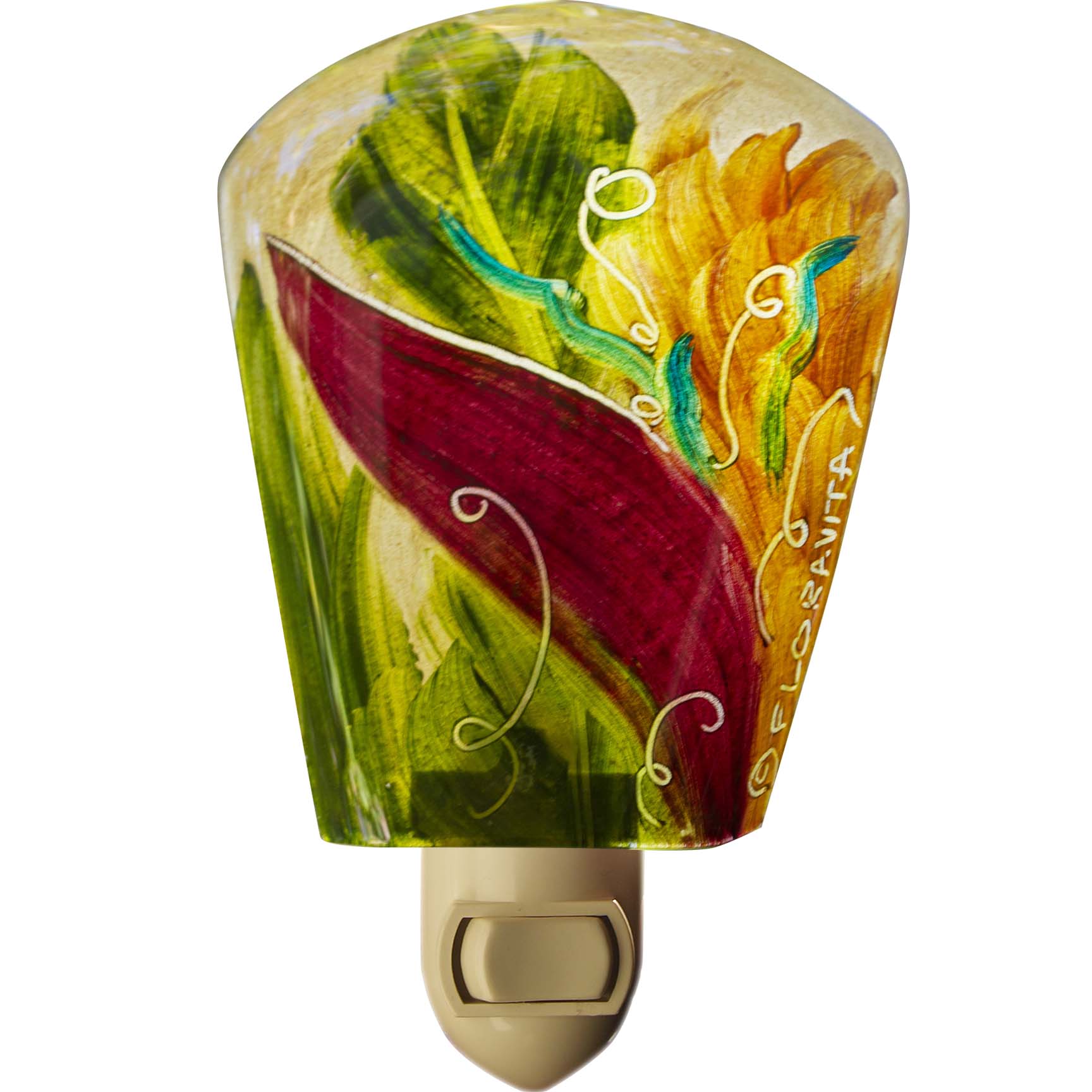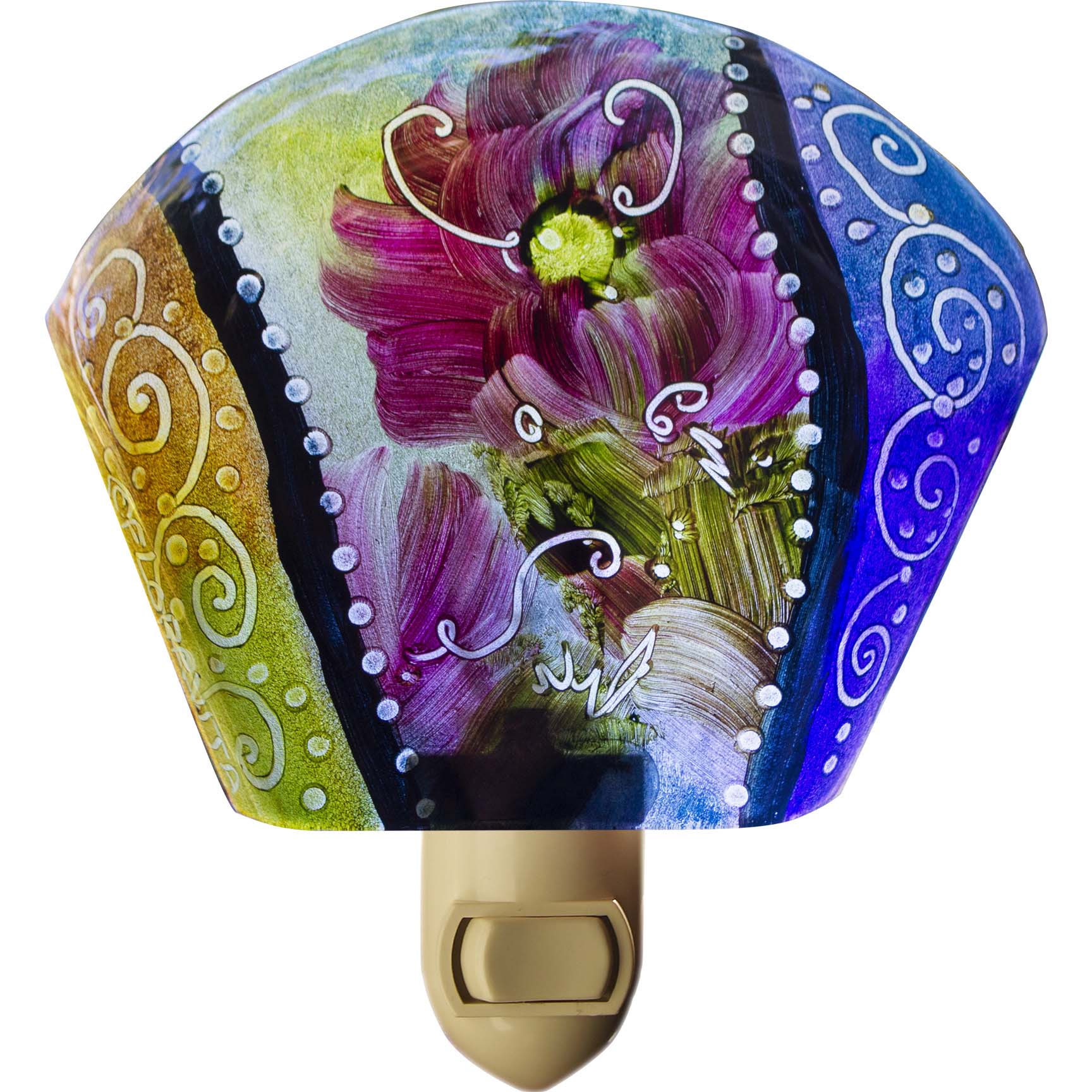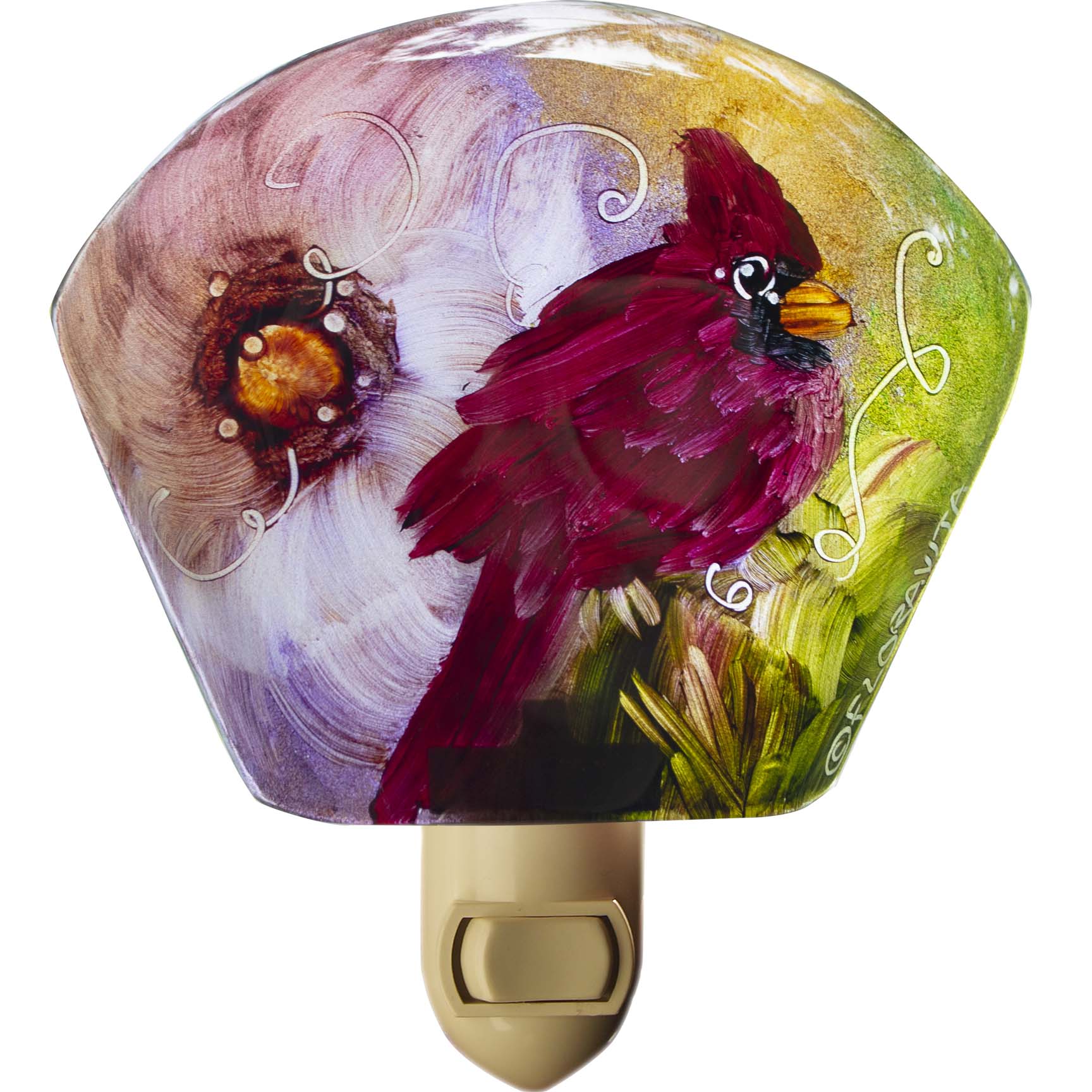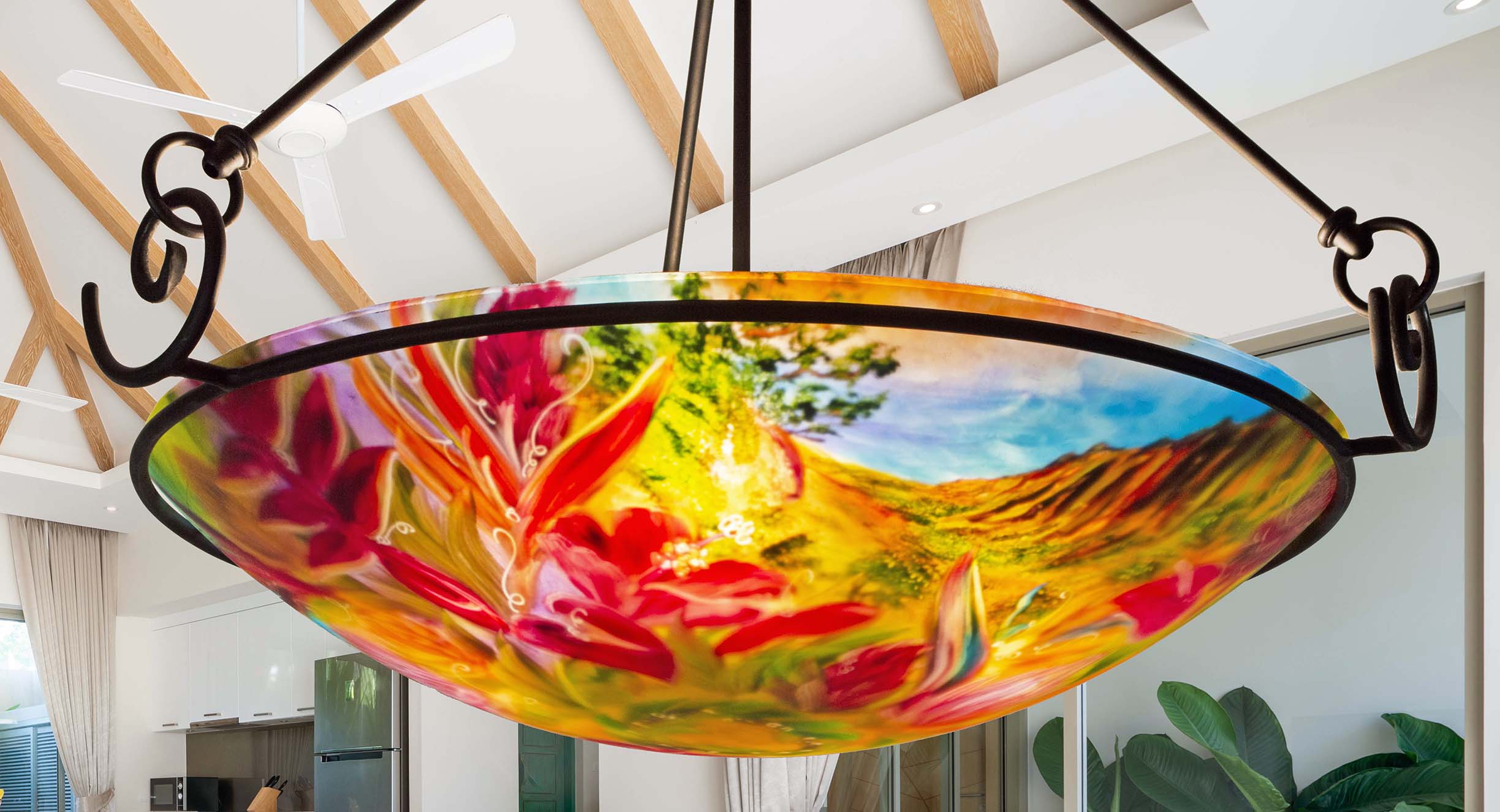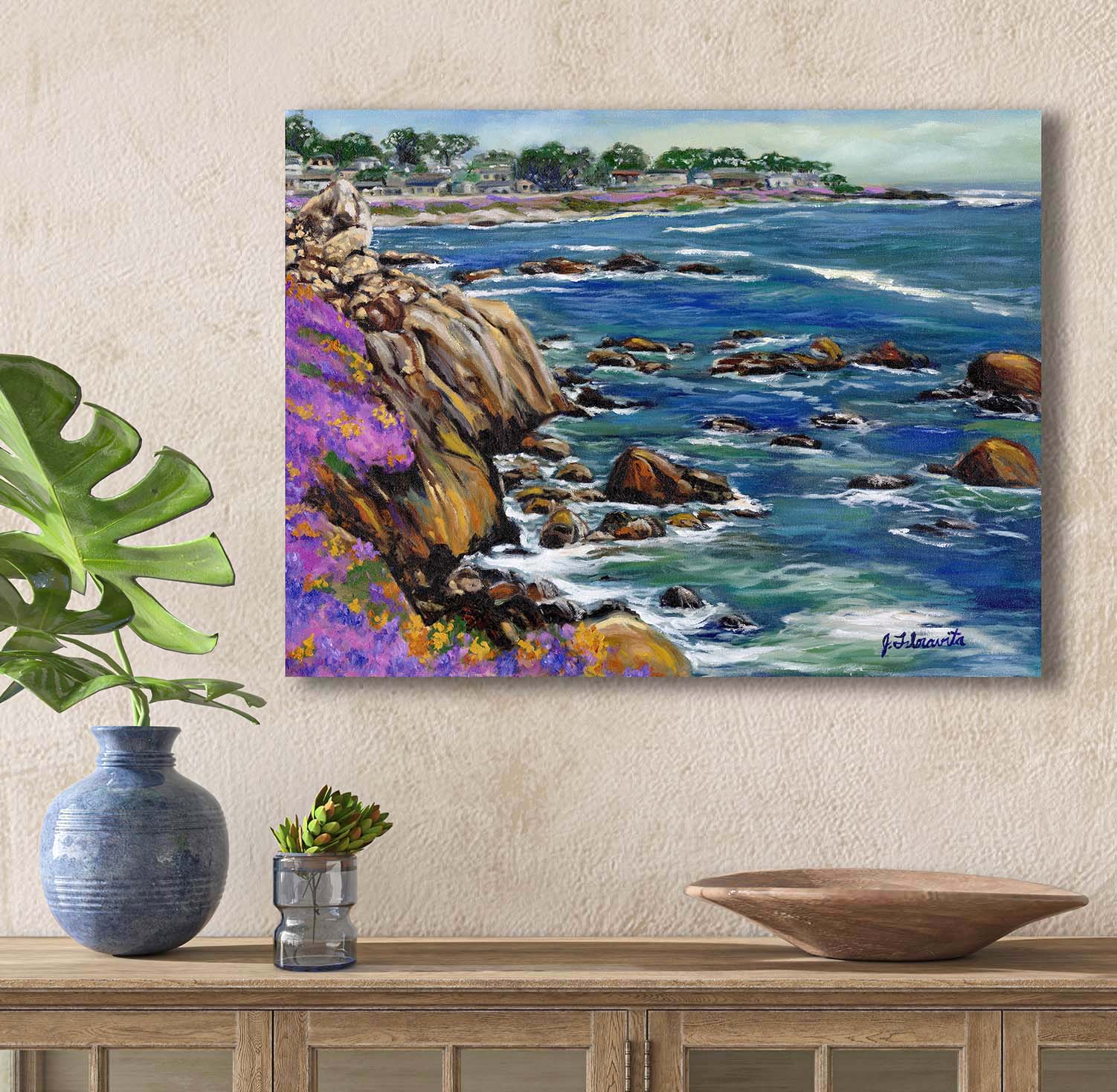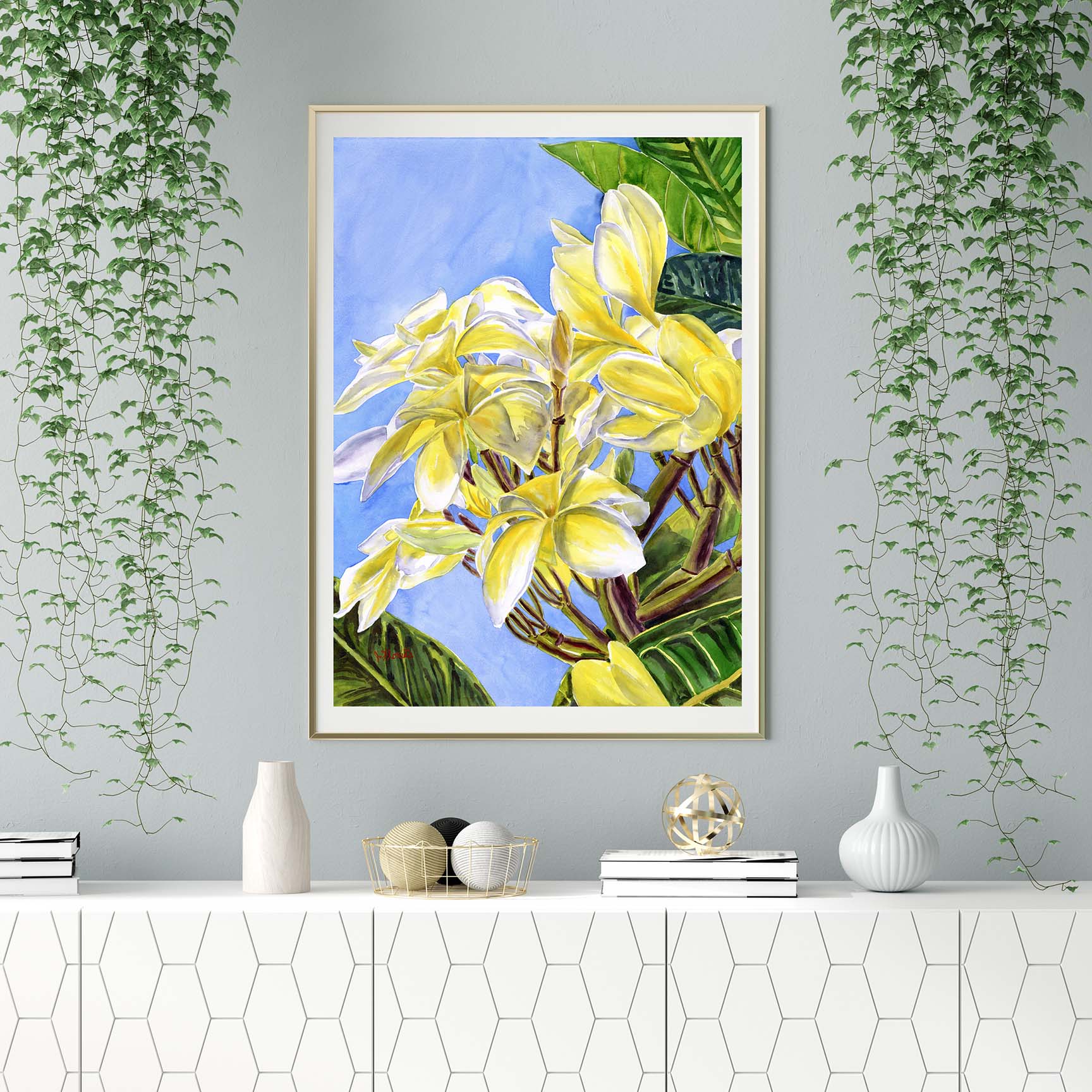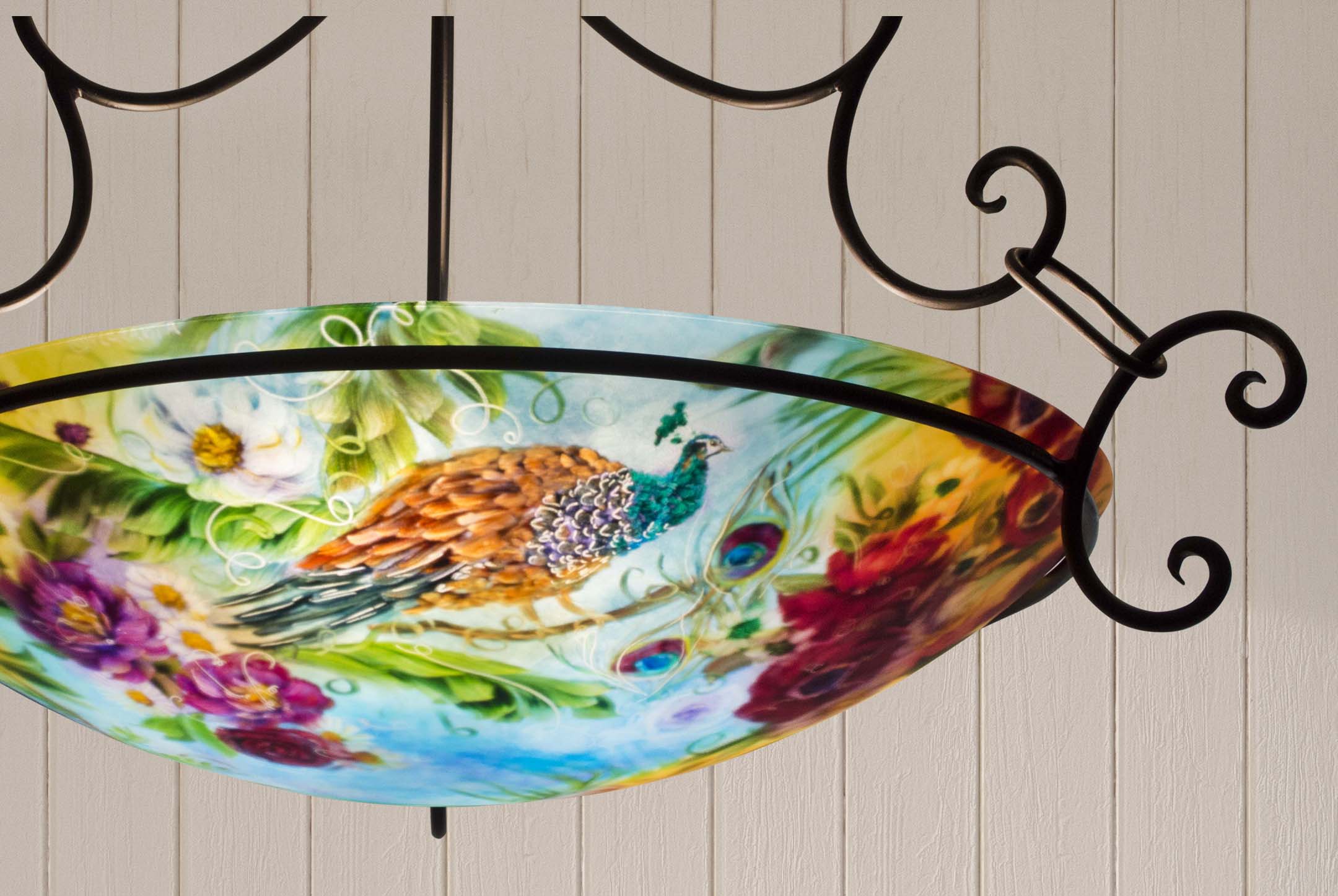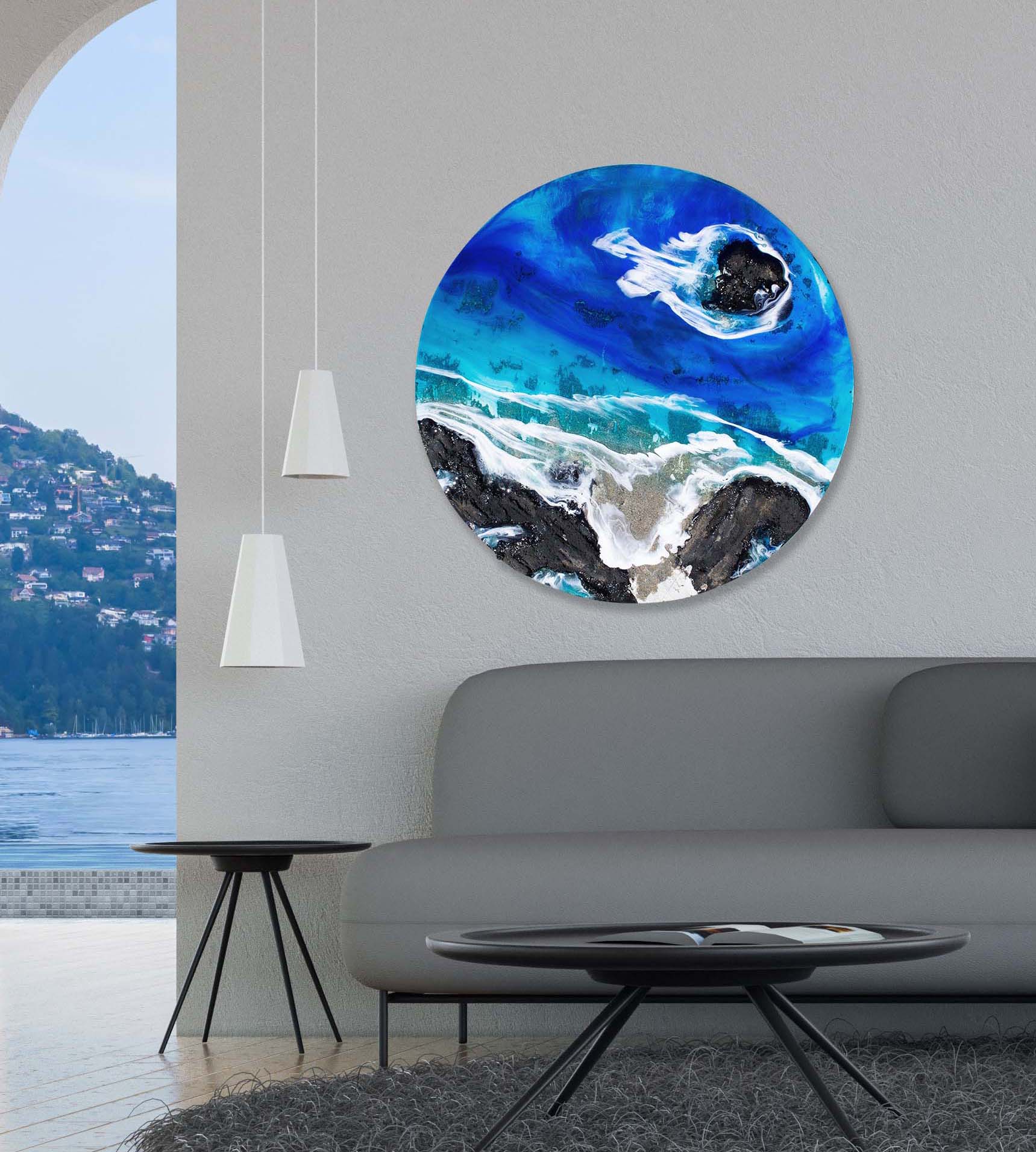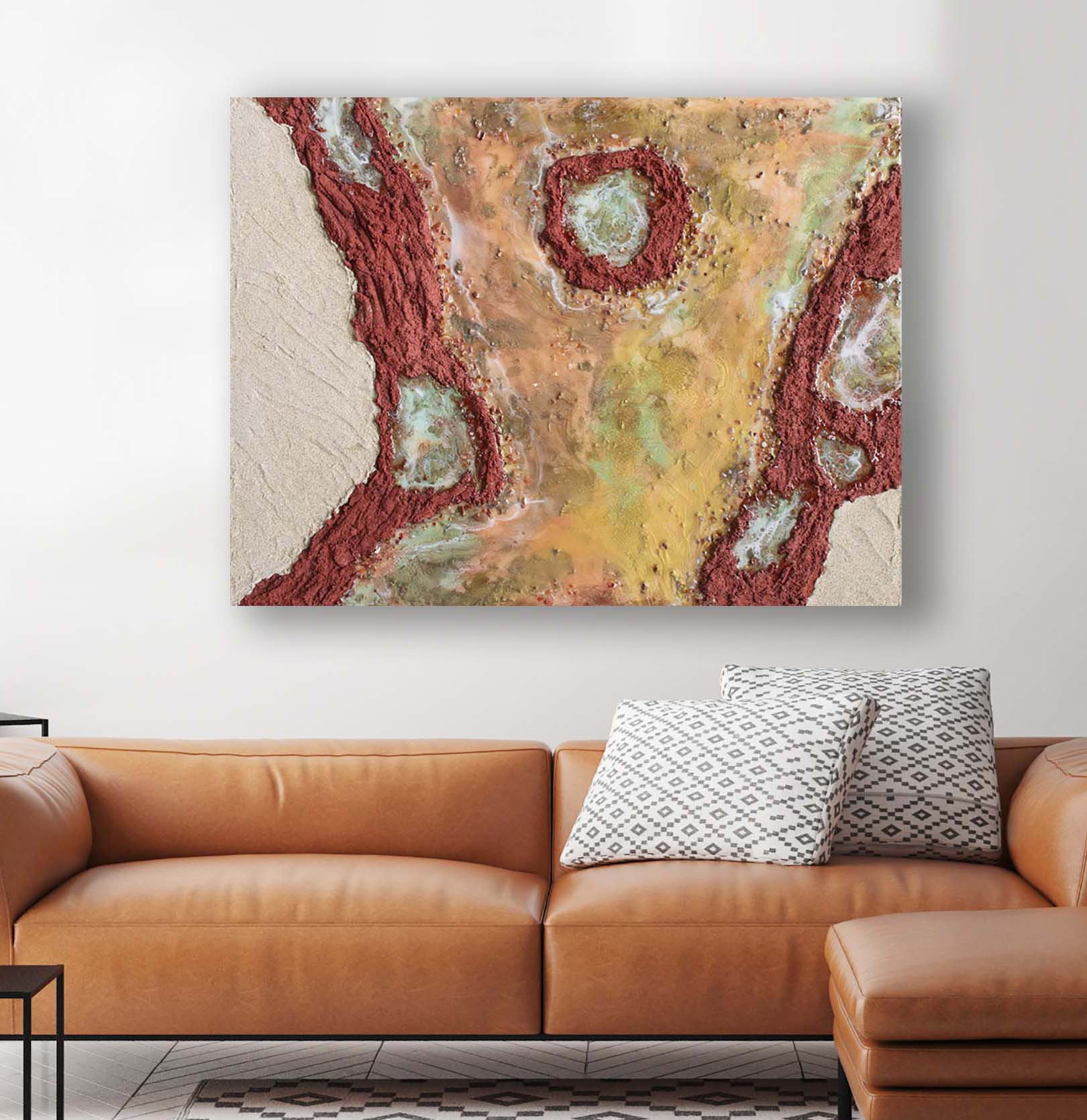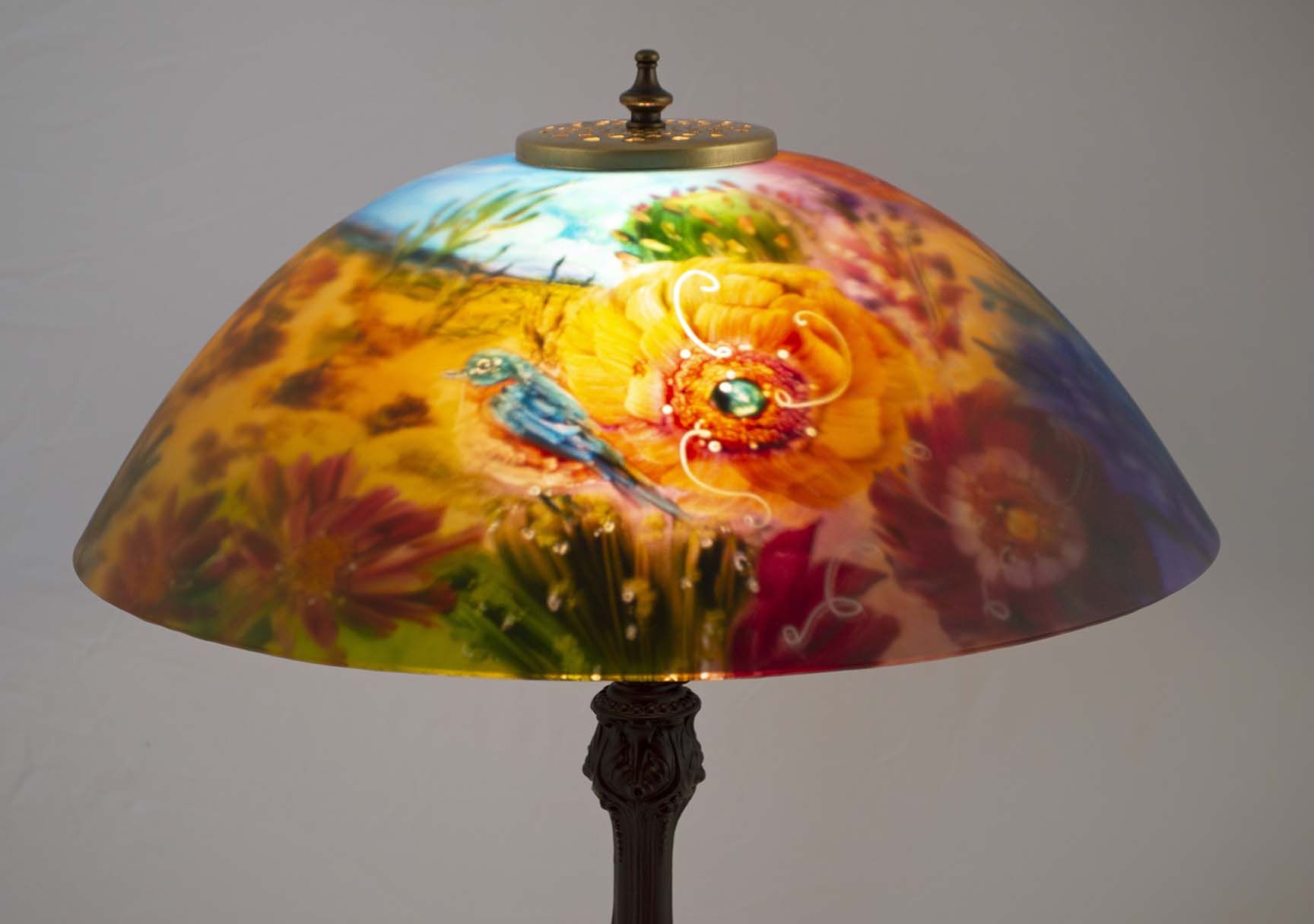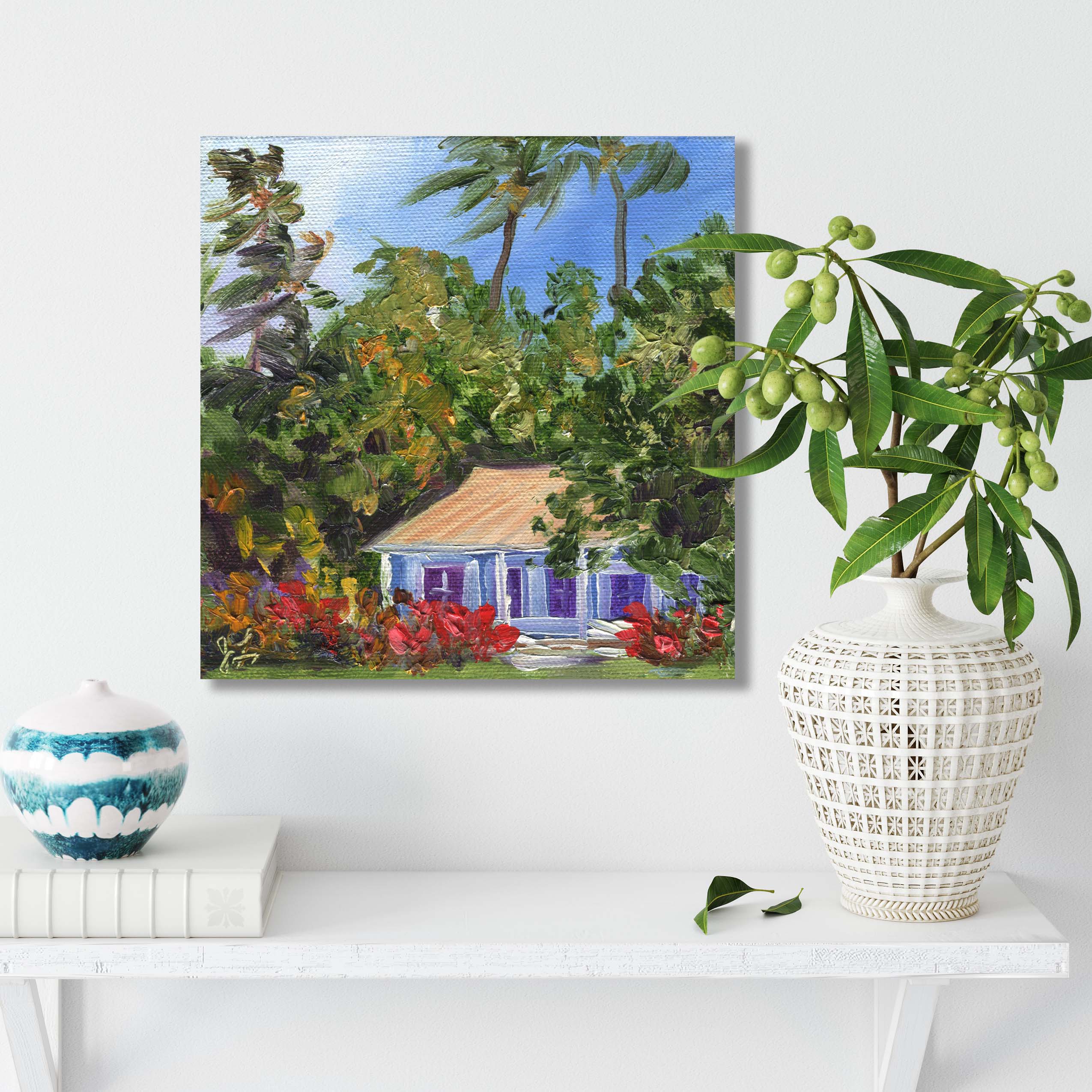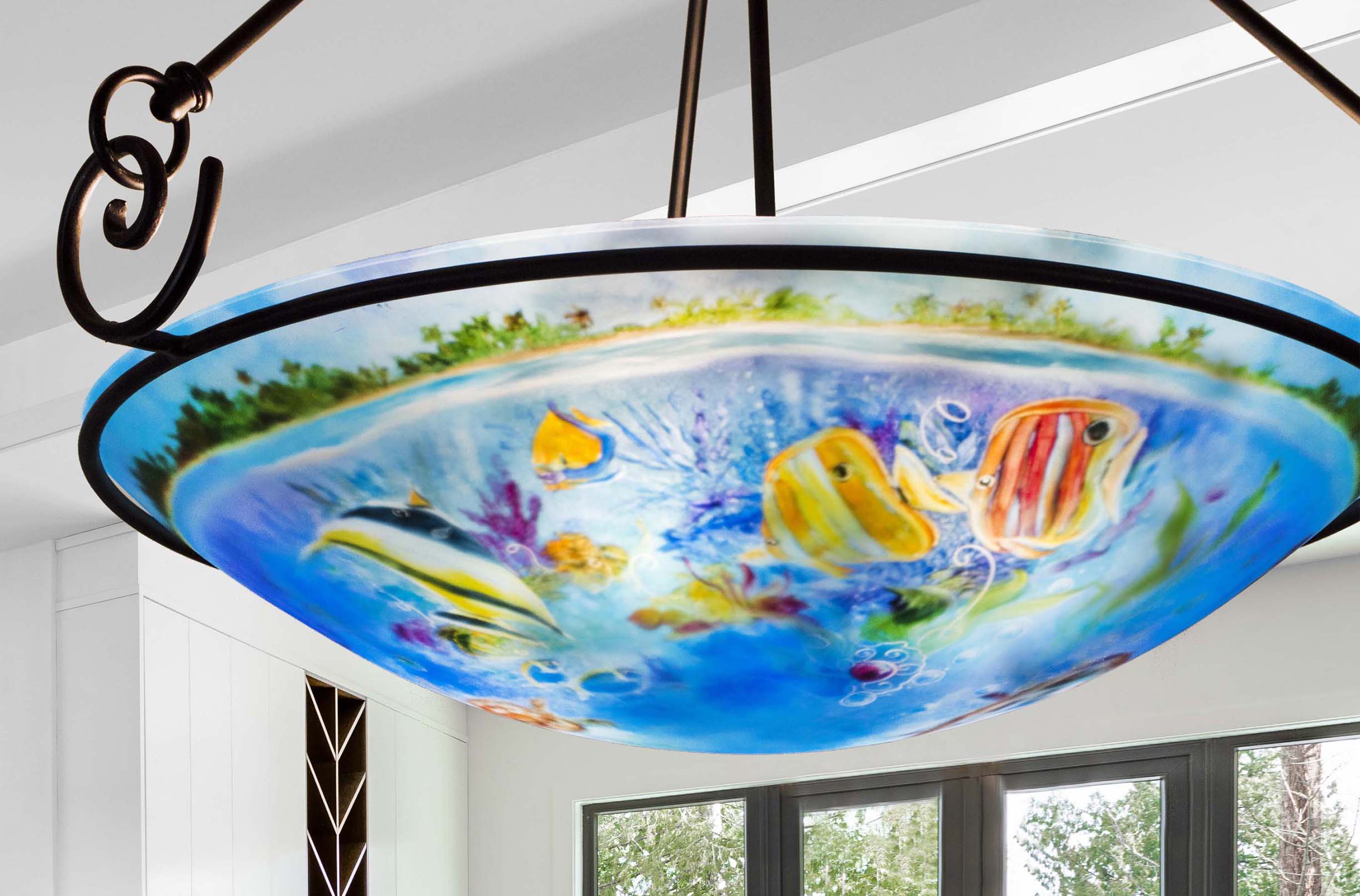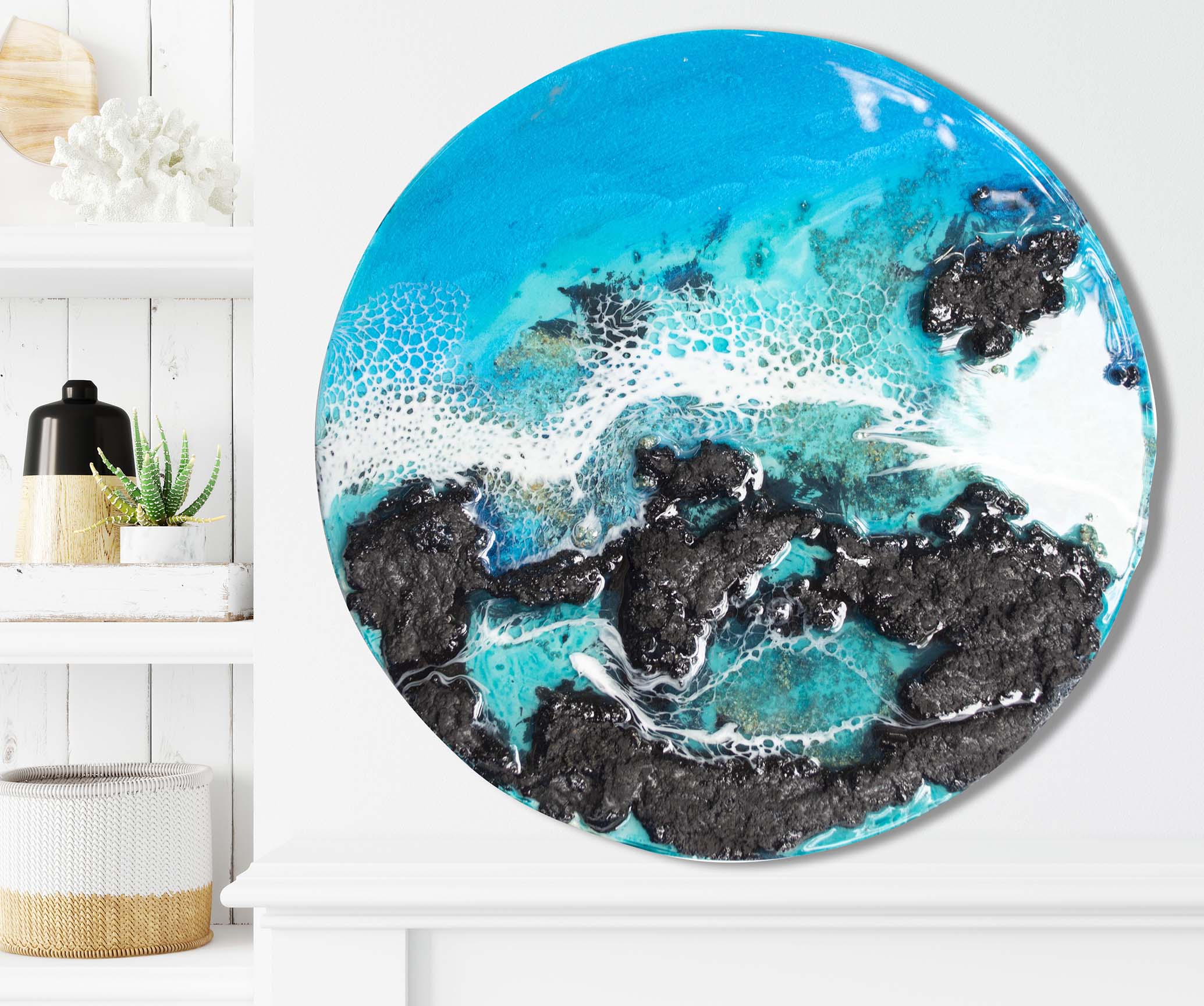
Blue Bird of Paradise Tropical painted wall sconce by artist Jenny Floravita—Collector has 3 sconces and a chandelier!
Before I begin I want to say, Bless those special people who buy and collect fine art from artists and art galleires! I do understand this is not done lightly and I appreciate You…even if we don’t work together in the end. As a whole, Thank You for allowing artists all over the world to thrive in their life’s calling.
Every now and then…and it is very rare for my experience…a commission prospect doesn’t work out. Guidelines help me to determine if a commissioned chandelier (or oil painting) would be successful—and in fact a huge percentage of my studio sales are indeed commissions—it is still impossible to know 100% if an idea will have success. Knowing when to turn commissions away is key to saving both your valuable working time, which if you are like me, there is never enough of…and it also avoids disappointment for someone who is looking for a very specific work of art.
These days I am a very busy artist and mom to a 20 month old. My work is quite demanding as I am a very established artist, many people seek me out and I speak to new people every day about my work! For the most part I am good at spotting and turning away commissions that aren’t a good fit for my work in a single phone call or email.

This collector has 3 sconces and a chandelier!!!
Recently, I was approached by a lady with an art collection for a possible chandelier commission. It had warning signs near the start of the commission process and I spent considerable time trying to work out the concept and then in the end, realized it was a piece to pass on. And there is no harm in trying. So I write this blog for both future clients and artists alike…and also as a reminder to myself.
And to be clear, I do challenge myself with commissions that are on the edge of my subject matter. I take challenges on new color combinations and I’ve really pushed myself to grow as an artist through the years. I have altered or broadened my work in ways that are beneficial to both me and my clients. In fact, my abstracts arose several years ago through just such a challenge and that client now owns FOUR of my chandeliers and I’ve since developed and sold at least a couple hundred abstracts. The numerous combinations of my fixture styles have also evolved to fit many different scenarios for my client’s different ceiling heights and installation needs and in fact, I am in the process now of adding yet one more variation. Problem solving is part of being a good working artist.
But every now and then a commission doesn’t work out and here are some things to think about prior to accepting a commission (if you are an Artist) or choosing an artist (if you are a Collector).
5 Ideas To Carefully Consider for Successful Commissions—Artists and Collectors
- An artists body of work must be inline with your vision
- A radical style change in technique is probably risky and should be considered carefully
- Does Commissioned work of art need to match your other art works?
- When there are Greys
- Trust your Instincts and Avoiding Red Flags and Stop Signs

Beautifully painted lbue and purple orchids with white flowers and green leaves in a glass wall sconce by artist Jenny Floravita—This Collector has 5 sconces and 2 chandeliers!!!
There are other things to consider but the reasons above are very important. One exception alone isn’t necessarily going to deem a commission to failure but more than one of the above items and I would step back and ask hard questions. Artists: it’s ok to say, No and understand that sometimes the projects you say no to you make more on as you can create other works with that time…and Collectors, soul search if an artist doesn’t represent what you are looking for in style—as a rule, it’s best to choose an artist where you like a majority of what you see in their portfolio. If they didn’t do commissions—and many artists don’t!—then ask yourself if you would still choose their work? You must like how they actually paint or sculpt, etc…
Let me tell a story in which case a commission wasn’t right for my style. This is recent. The client in question is a very nice lady—and that was a big motivation for my desire to complete a chandelier that she would love. It wasn’t to be.
In our original phone conversation, she indicated that she loved my work in several ways. In our second conversation I saw the first red stop sign: her surrounding artwork was so, so different and my chandelier possibly had to match…but I set the feeling aside because sometimes this one thing alone isn’t an indication of failure.
We had a series of emails…which is normal…and a phone conversation or two, which is also normal. I try to really nail down what the client is looking for in their custom chandelier. I also completed an initial proposal and after this, more questions that were more concerning in terms of style shifts were forming in both my mind and hers. So much so that of the 5 commissions that I accepted in that same couple week time-frame, she was the only one holding off feeling good to send a deposit—a red stop sign because she had doubts. To be clear: normally I don’t do concept work beyond a proposal without deposits…and I have more to say about this at the very end…and I myself held a small reservation yet still, I overlooked that because I wanted to see if I could nail down the idea—and I still felt that I could. A floral, right??? I paint them ALL the time!

Beautifully painted white orchids and green leaves in a glass wall sconce by artist Jenny Floravita
While we were creating the proposal I asked for her to send me sections of my work that she liked that she could envision in her piece…and here is the biggest red flag: the sections were a few very tiny squares! Now I have to date well over 3000 images of my work on my website so surely there would be more that appealed…but not in this case. I should have nicely declined at that point.
What I did next is something that I don’t do often but it can be helpful for those challenging commissions: I painted colors and floral elements in a real, 24 inch chandelier in big sections. This is a piece I will send to one of my galleries. After the client viewed it, she indicated it was very, very far from her vision. There were things that were ‘approved’ but overall, it was day and night. I should have stopped there.
The client in question really was pushing for a sketch, which I knew isn’t as simple as one would think in my complex art form. My vast body of work serves as sketches. And when I deem it would be helpful, I paint in a real bowl to show examples or I do a concept piece in smaller glass…which is exactly what I did next for this client. In fact, I anticipated that she would tell me to use single colors for the flowers and to use outlines around them…and I want to point out that when clients are giving such specific art direction, it’s also not a good sign that success will follow.

Red and White Koi with water lilies wall sconce on curved, vase shaped glass by artist Jenny Floravita
When an artist accepts great challenges, you must put ego aside as much as possible (which can be difficult for established artists) and I did this but the style change was so radical, the techniques of my brush literally stopped—hard to describe but it was not a good feeling to realize that I couldn’t see myself progressing. I was trying to do this flatter style of flower for this nice lady —not a good fit for my techniques or medium at all…and not the client’s fault either. I was honestly giving it my best and so I feel ok about that yet in the end I disliked what I was doing so much, it was so wrong for my work I sent her a quick email to indicate that we should both move on.
For those of you who admire my artistry and in particular my floral chandeliers, it would seem ridiculous that I would have to change styles to paint a chandelier with flowers as I have created so many awesome pieces!!! Yet I understand people have different tastes in art. It is not possible to please everyone.
And more so, I totally didn’t like the actual look of what was happening in my glass concept piece. It was just not right to me and I realized I didn’t want to paint this particular way in a real chandelier bowl.
To go back to the 5 things to carefully consider about commissions, for both Artists and Collectors, please continue to read below.
An Artist’s Body of Work Must Be Inline With Your Vision
Does the artist’s body of work reflect what you are looking for? Truly, can you see pieces within that artist’s work that you can envision in the piece you seek to commission?
Example: Normally I ask people to look through my vast body of work—and I do have several thousand images of my art on my website—and if a client CAN indicate several (big) sections of chandeliers or paintings, then that is a very good indication. In fact, I’ve always been able to successfully complete commissions with this simple rule.

Black, Yellow and White Koi with water lilies wall sconce on curved, vase shaped glass by artist Jenny Floravita
When it hasn’t worked…as in a recent prospect…was when the sections indicated are so, so small, that’s just not a good sign for either Artists or Collectors.
You must be asking, why would that even occur? Well, what I can guess is that sometimes people look through an artist’s work and they do appreciate what that artist does and maybe there aren’t a lot of other people working in the medium, etc…and then to go a step further, I think that it is then easy to assume if an artist does X then they can do Y. And sometimes, yes, this works! Sometimes it’s price related, sure, and sometimes it’s inexperience. Sometimes it’s just a mistake in judgement on both sides—we all make them.
A Radical Style Change is Risky
If your style must change radically—so radically that it involves a complete technique overhaul…maybe consider that this artist or collector is not for you.
Some artists thrive on this but truly, most don’t. You really have to be a prolific, working artist to understand why…too many reasons to explain today.
Nuf said.
Does a Commission Need to Match Other Art Works? And if so, is there wiggle room?
Does the client’s surrounding artwork need to blend with your work? Some art collectors have very eclectic tastes and if they see something they love as a work of art, they don’t care if it matches anything—they just want it and in their rooms, this tends to work. But if the overall style is so different from an artist’s natural styles AND if the commissioned work has to honestly be similar in feeling—and artists, you need to search your heart on this, maybe it’s good to take a pass as both the collector’s time and a your most valuable artist’s (as our time is income).
And Collectors—sometimes you might want to try to accept who the artist is in terms of their style and allow them to use their best judgement in commissions. If you’ve been looking at their work for a long time, it must be because you really like it and want to try to fit a piece into your home. Please understand that an artist’s vision can compliment your art collection especially if the work, like my reverse painted glass chandeliers, is to be a focal point.
Where There is a Grey Area
In the case of my recent failed prospect, the collector expressed that they loved my work and this is always a must…and then the requested subject wasn’t so far from what I do initially—flowers. An artist can make an honest effort to morph (and it’s generally not a good idea to expect artists to morph too much) and then as time goes on it becomes more clear that a style change is too radical…it’s easy to look in hind sight and wish that the idea had been put aside sooner.

Black, Yellow and White Koi with water lilies wall sconce on curved, vase shaped glass by artist Jenny Floravita
And here is a less obvious thing to look for…
Trusting Your Instinct and Avoiding Red Flags and Stop Sings
When you see red flags or red stop signs, those are our inner instincts at work so watch for them and listen to them! I received many red stop signs on this recent project that I write on yet I moved through them. Our first conversation, it appeared to be a straight forward abstract or floral…but after the second conversation…the first red stop sign was there. The signs continued to surface in multiple ways and I almost set the project aside sooner about 4 times within a two week period. Again, in hindsight it’s easy to say, yes, I should have let this project slide by. It’s good to listen to your inner instincts.
For me personally, as an artist, I want to make people happy. I thrive on that and have been willing to push my boundaries to do so. I always seek growth as an artist and I enjoy innovation more than most. And probably for these reasons, I’m very much in demand as an artist. And it’s important to understand that you can have a sorts of guidelines in place and every now and then, a commission just won’t be a success.
My track record, aside from trying to paint on antique glass that kept breaking (for a very nice client) a failed commission only happens every couple of years, if that! Not that I haven’t had to try a second time within a style that I work in to make color adjustments—as this happens at least once a year, I’d like to think I only fail at commission every now and then because I’ve analyzed what will work and what won’t ahead of time. That comes with experience. I’ve been a professional artist for two decades. For my reverse painted glass chandeliers I specifically require first that a client has to like my: Form, Function and Style…and obviously my style didn’t fit the failed commission that I’m referencing in this article, so there you go!
Lastly—Artists, Consider a Fee for Conceptual Work
For conceptual work that goes above and beyond what you normally do in your experience with commission, consider a flat fee that is also a ‘kill fee’—non-refundable or maybe it goes towards the final price of a work of art…or maybe an additional fee or percentage as commissions always take so much longer and are more involved versus the freely created work that you sell through your studios and galleries.
It’s also been my experience that many collectors expect to pay more for commissions so don’t feel badly about implementing this into your future projects. I would suggest implementing a fee for conceptual work when you’ve gone through your normal proposal process that works for 95% of your clients yet your client needs more. Use your own judgement.
Had that been in place for this commission, I suspect it wouldn’t have gone to the point where I painted colors/flowers in a real chandelier to gauge if the client would be pleased enough to proceed to yet another concept. Reason is that she had doubts. For good reason—we were both trying to make my work into something it is not.
By the way, the sconces you are viewing in this article—they are for Collectors who each have 1 or 2 of my reverse painted chandeliers and they each also have 3 or 5 of my sconces! And as a very specific statement needs to be said in a small space that is a sconce (compared to my continuous chandelier bowls), for each of these collectors I painted one or more concept pieces in glass in order to get the final art just right.
Hope this helps both artist and collectors in navigating the challenging yet more frequently rewarding process of commissioning a work of art from a working artist. Again, Thank You to all of the kind collectors out there. Without you, artists won’t be able to follow our hearts every day. 🙂


